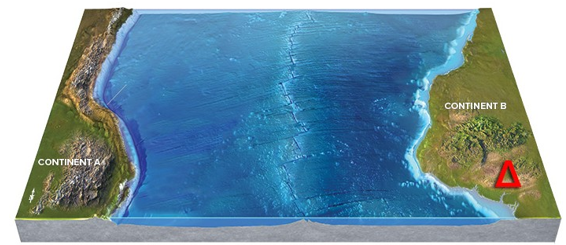Coliform bacteria populations are routinely monitored in drinking water supplies, swimming pools, and at beaches because these bacteria
A. Are especially toxic to animals
B. May mutate into severely pathogenic strains
C. Are more difficult to find in water
D. Indicate the presence of feces in water
E. Usually live in pesticide-contaminated water
Answer: D
You might also like to view...
How can we use the parable of the tragedy of the commons to create sustainable societies?
What will be an ideal response?
Use your knowledge of plate boundaries to answer whether a volcano is likely or unlikely to form at the location of the red triangle.

A) Likely
B) Unlikely
Which of the following competes with a natural messenger and stimulates a receptor?
A) an agonist B) an antagonist C) both a and b D) neither a nor b
Two logging companies are deciding whether or not to cut down a significant portion of a particular forest that both have access too. Both companies understand the environmental consequences of their actions, knowing that they are trading off higher profits for a better outcome from society's point of view. The payoffs facing these companies are given in the table below.From the table, we know that if Company 2 chooses to cut, Company 1 will choose to ______ the forest. If Company 2 chooses to not cut, Company 1 will choose to ______ the forest.
A. cut, do not cut B. cut, cut C. do not cut, do not cut D. do not cut, cut